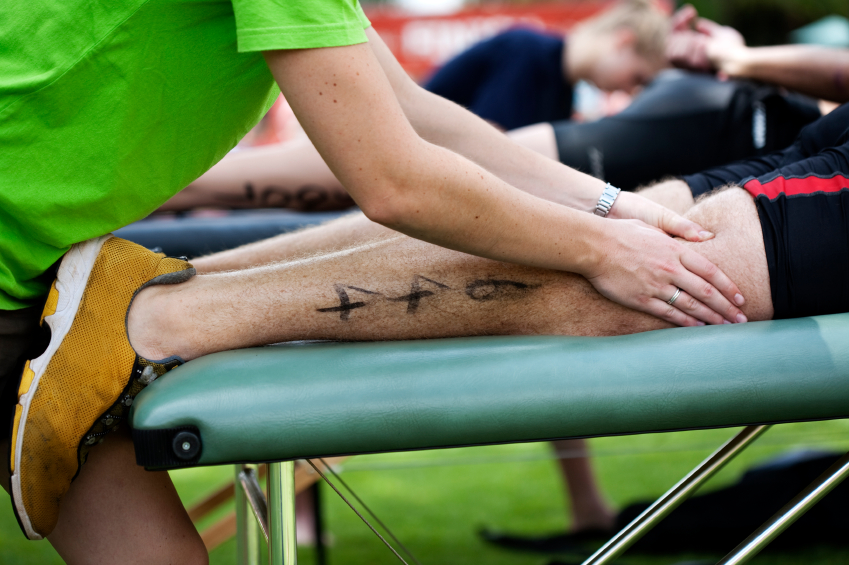Sports Massage
- Head forward syndrome
- back spasms
- limited range of motion
- hip pain
- high hamstring tendinitis

Sports massage is a form of bodywork geared toward participants in athletics. It is used to help prevent injuries, to prepare the body for athletic activity and maintain it in optimal condition. Sports massage helps athletes recover from workouts and injuries.
Main effects to be drawn from sports massage:
PHYSICALLY – the pressures of massage along the flow of the lymphatic and venous systems encourage blood with oxygen and other substances (which are essential to repair and growth) to be pumped more effectively through the body. This aids in the restoration of normal tissue condition. The process also facilitates the exchange of fluids and helps in the removal of lactic acid. Massage will also stretch the muscle fibers and the fascia surrounding muscles, breaking down scar tissue and adhesion.
PHYSIOLOGICALLY – massage aids in the reduction of muscle pain and enhances relaxation.
PSYCHOLOGICALLY – feel stimulated with a feeling of warmth and readiness to perform. Anxiety may also be relieved. “Put the tiger back in your tank!”
What to expect:
Treatments will usually conclude with passive and active sports stretch exercises plus advice on self help exercises.
Pre-event massage – is given shortly before an athlete competes. It consists mainly of brisk effleurage strokes to stimulate and warm the muscles and petrissage to help muscles move fluidly and to reduce muscle tension. Effleurage is generally a relaxing stroke but when done briskly it is stimulating.
Post-event massage – is usually given one to two hours after the competition is over in order to give dilated blood vessels a chance to return to their normal conditions. Post event massage is light and gentle in order to not damage already stressed muscles. The goal is to speed up removal of lactic acid and waste products and reduce swelling. Very light effleurage will decrease swelling while light petrissage will help clear away toxins and relieve tense, stiff muscles.
Maintenance massage – is performed at least once per week while the athlete is in training targeting typical areas such as the back and legs. Deep effleurage and petrissage are used to relax and tone knotted muscles.


